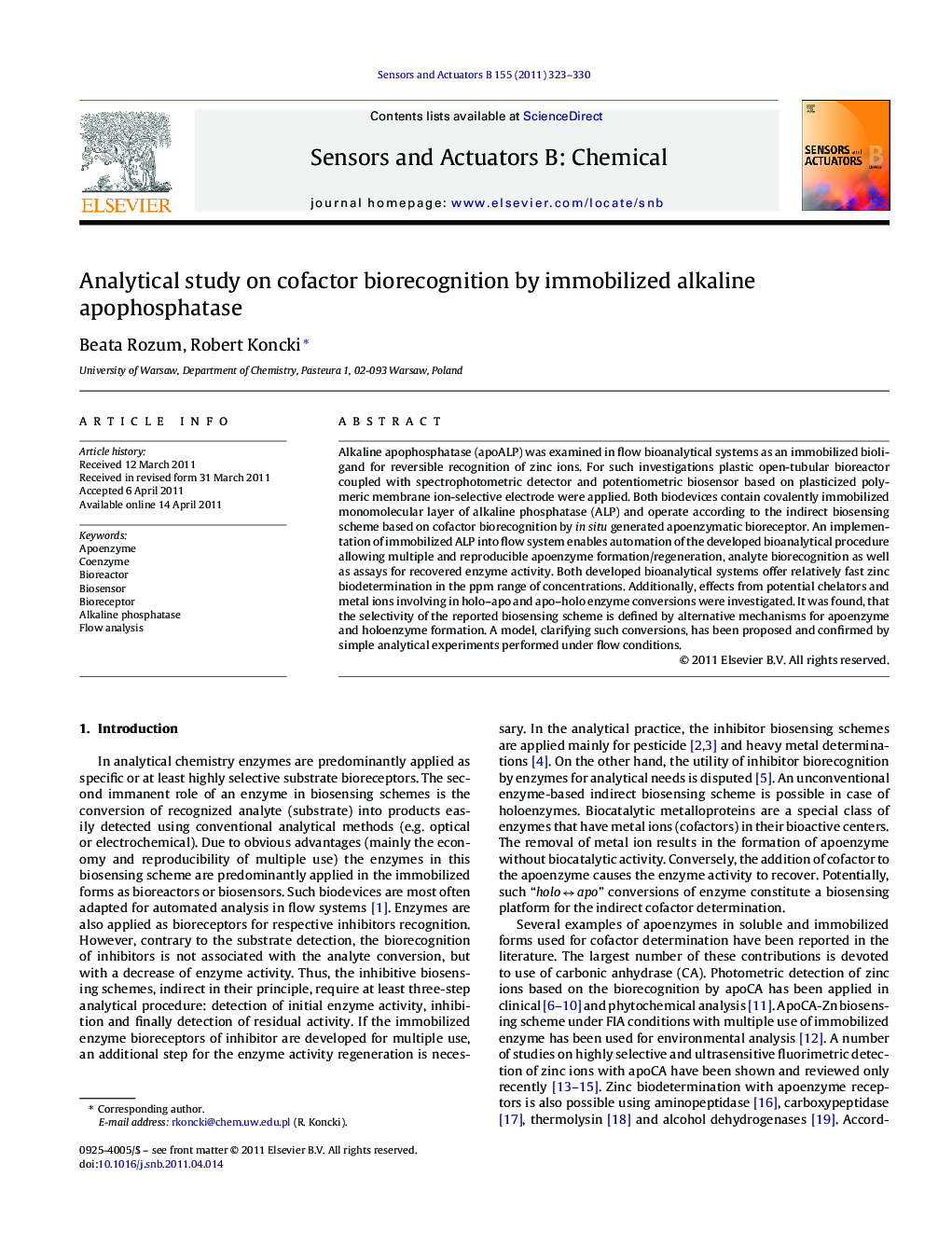| Article ID | Journal | Published Year | Pages | File Type |
|---|---|---|---|---|
| 745984 | Sensors and Actuators B: Chemical | 2011 | 8 Pages |
Alkaline apophosphatase (apoALP) was examined in flow bioanalytical systems as an immobilized bioligand for reversible recognition of zinc ions. For such investigations plastic open-tubular bioreactor coupled with spectrophotometric detector and potentiometric biosensor based on plasticized polymeric membrane ion-selective electrode were applied. Both biodevices contain covalently immobilized monomolecular layer of alkaline phosphatase (ALP) and operate according to the indirect biosensing scheme based on cofactor biorecognition by in situ generated apoenzymatic bioreceptor. An implementation of immobilized ALP into flow system enables automation of the developed bioanalytical procedure allowing multiple and reproducible apoenzyme formation/regeneration, analyte biorecognition as well as assays for recovered enzyme activity. Both developed bioanalytical systems offer relatively fast zinc biodetermination in the ppm range of concentrations. Additionally, effects from potential chelators and metal ions involving in holo–apo and apo–holo enzyme conversions were investigated. It was found, that the selectivity of the reported biosensing scheme is defined by alternative mechanisms for apoenzyme and holoenzyme formation. A model, clarifying such conversions, has been proposed and confirmed by simple analytical experiments performed under flow conditions.
